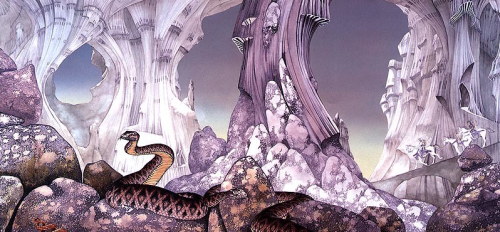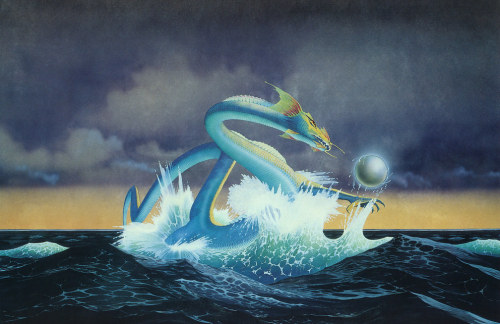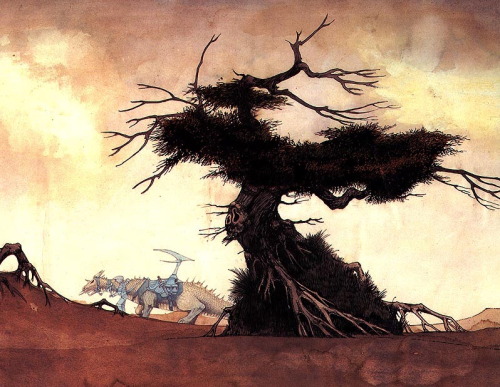Iapetus, Moon Of Saturn, Observed By The Cassini Probe On September 10, 2007, From A Distance Of About

Iapetus, moon of Saturn, observed by the Cassini probe on September 10, 2007, from a distance of about 73,000 kilometers.
More Posts from Epic-flight and Others

Seven Sisters surrounded by cosmic dust © astrofalls

Art G.Shvecova (Design graphics - Green Planet_250418)

The Dark Seahorse in Cepheus : Light-years across, this suggestive shape known as the Seahorse Nebula appears in silhouette against a rich, luminous background of stars. Seen toward the royal northern constellation of Cepheus, the dusty, obscuring clouds are part of a Milky Way molecular cloud some 1,200 light-years distant. It is also listed as Barnard 150 (B150), one of 182 dark markings of the sky cataloged in the early 20th century by astronomer E. E. Barnard. Packs of low mass stars are forming within, but their collapsing cores are only visible at long infrared wavelengths. Still, the colorful stars of Cepheus add to this pretty, galactic skyscape. via NASA

Richard Bizley



Illustrations by Roger Dean.

Meirl

Orbiting - 210216

A selection orbs of the Solar System: Mercury, Venus, Earth (and Moon), Mars, Jupiter, Saturn, Uranus, Neptune. The spacecraft responsible for these images are as follows:
Mercury was photographed by Mariner 10.
Venus was imaged by the Magellan spacecraft’s radar.
Earth and its Moon were photographed by Galileo.
Mars Global Surveyor took the image of Mars.
Jupiter was photographed by Cassini as it traveled to Saturn.
Saturn, Uranus and Neptune images were taken by the twin Voyager spacecraft.
(NASA)

Mountain Lake - 210408

Pulling Away.
You can get this GIF as a phone wallpaper for free through the Zedge app.
You can also get this GIF as a looping 1080p video if you support me on Patreon.
Twitter / Instagram / Shop / Gumroad / Patreon / Zedge
-
 concord reblogged this · 2 months ago
concord reblogged this · 2 months ago -
 braidedgraphite liked this · 5 months ago
braidedgraphite liked this · 5 months ago -
 hilema reblogged this · 6 months ago
hilema reblogged this · 6 months ago -
 hilema liked this · 6 months ago
hilema liked this · 6 months ago -
 schwarzebrandung reblogged this · 6 months ago
schwarzebrandung reblogged this · 6 months ago -
 lucciconi liked this · 7 months ago
lucciconi liked this · 7 months ago -
 thefatdood liked this · 8 months ago
thefatdood liked this · 8 months ago -
 mxsbxhxv reblogged this · 9 months ago
mxsbxhxv reblogged this · 9 months ago -
 dustbunnyck liked this · 9 months ago
dustbunnyck liked this · 9 months ago -
 sir-catsalot95 liked this · 9 months ago
sir-catsalot95 liked this · 9 months ago -
 phantom-streaker reblogged this · 9 months ago
phantom-streaker reblogged this · 9 months ago -
 flyingcooksblog liked this · 9 months ago
flyingcooksblog liked this · 9 months ago -
 tolbachik liked this · 9 months ago
tolbachik liked this · 9 months ago -
 lonestarflight reblogged this · 9 months ago
lonestarflight reblogged this · 9 months ago -
 lonestarflight reblogged this · 9 months ago
lonestarflight reblogged this · 9 months ago -
 baddestvenus-in-virgo liked this · 1 year ago
baddestvenus-in-virgo liked this · 1 year ago -
 wagnerrms liked this · 1 year ago
wagnerrms liked this · 1 year ago -
 some-places liked this · 1 year ago
some-places liked this · 1 year ago -
 justanoldfashiontumblog reblogged this · 1 year ago
justanoldfashiontumblog reblogged this · 1 year ago -
 justanoldfashiontumblog liked this · 1 year ago
justanoldfashiontumblog liked this · 1 year ago -
 kaiyves-backup reblogged this · 1 year ago
kaiyves-backup reblogged this · 1 year ago -
 kaiyves-backup liked this · 1 year ago
kaiyves-backup liked this · 1 year ago -
 redlkia liked this · 1 year ago
redlkia liked this · 1 year ago -
 kurotaurus17 liked this · 1 year ago
kurotaurus17 liked this · 1 year ago -
 heardbook liked this · 1 year ago
heardbook liked this · 1 year ago -
 illyriashade56 liked this · 1 year ago
illyriashade56 liked this · 1 year ago -
 zack-creeper liked this · 1 year ago
zack-creeper liked this · 1 year ago -
 mmmmmmmmicrowave liked this · 1 year ago
mmmmmmmmicrowave liked this · 1 year ago -
 thebugfrompreschool reblogged this · 1 year ago
thebugfrompreschool reblogged this · 1 year ago -
 thebugfrompreschool liked this · 1 year ago
thebugfrompreschool liked this · 1 year ago -
 beardedmrbean liked this · 1 year ago
beardedmrbean liked this · 1 year ago -
 beardedmrbean reblogged this · 1 year ago
beardedmrbean reblogged this · 1 year ago -
 anumberofhobbies liked this · 1 year ago
anumberofhobbies liked this · 1 year ago -
 rw02184 reblogged this · 1 year ago
rw02184 reblogged this · 1 year ago -
 azul-ryan liked this · 1 year ago
azul-ryan liked this · 1 year ago -
 livingobserver reblogged this · 1 year ago
livingobserver reblogged this · 1 year ago -
 livingobserver liked this · 1 year ago
livingobserver liked this · 1 year ago -
 ninefoldrin reblogged this · 1 year ago
ninefoldrin reblogged this · 1 year ago -
 rw02184 liked this · 1 year ago
rw02184 liked this · 1 year ago -
 ninefoldrin liked this · 1 year ago
ninefoldrin liked this · 1 year ago -
 lonestarflight reblogged this · 1 year ago
lonestarflight reblogged this · 1 year ago
